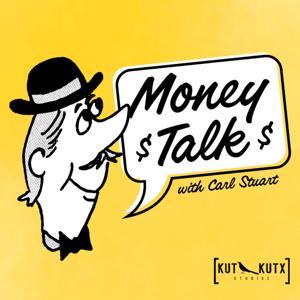Students have a lot of tugging at their energy and attention including classes, homework, jobs and activities. In this episode of KUT’s podcast “Higher Ed,” Southwestern University President Dr. Ed Burger and KUT’s Jennifer Stayton strategize on how to keep exhausted students engaged in the classroom.
Ed received an email from a “Higher Ed” podcast listener – and brand new college instructor – asking for help with keeping her tired students sharp. Here is the question:
“I teach an elementary math methods course. My students are seniors who are concurrently student teaching. They have two 3-hour classes each Monday and they are in classrooms the rest of the week. My class is the Monday afternoon class. I am struggling to keep their interest for three hours…. Any ideas on how I can get my tired students engaged and interested for three whole hours?”
Speaking from experience, Ed says several teaching strategies can help keep students’ (or anyone’s) attention when they are low on energy and rest but have a long stretch of classroom or meeting time ahead.
First of all, try to make the longer class feel like a shorter class.
“You’ve got to make sure that you give time for breaks. That’s number one,” says Ed. “It can’t be a three hour block.”
Ed also believes teachers need to inspire and support students’ curiosity about the material.
“Teachers should never be answering a question that [students] are not at that moment asking,” Ed believes. “So the real challenge in teaching math, or frankly, teaching anything … is to bring students to a place where they look at us and say ‘well, how do you do that?’ And than you say ‘I am so glad you asked!'”
He says fueling that curiosity will not only drive engagement and participation but also learning.
“If you make it into a riddle or a puzzle or a conundrum, then there’s this curiosity of ‘how come that person did it and I don’t know how to do it?'” says Ed. “And then it’s like ‘show me how. Show me the secret.’ So it’s like magic. ‘Show me a magic illusion and then show me the secret behind the curtain.’ And all of a sudden they’re learning.”
That active learning will, Ed believes, puts students in the position of creating more ideas themselves, which will in turn keep them more involved in what’s happening in the classroom.
“The more you can create active learning in the classroom or even outside the classroom,” says Ed, “we learn better when we are actively engaged and we’re the producers of the ideas rather than merely the consumers of the ideas.”
Of course, it’s hard to get around the fact that a three hour class is a long stretch of time. Ed says in his opinion, even 50 minute classes are too long. For him, an ideal class would last about 20 minutes in rotation with other subjects.
So Ed says one way to break up the time into smaller chunks is to introduce a new element every 20-25 minutes. What about something like a puzzler? Listen to this week’s full episode to hear more ideas on keeping students (or anyone) engaged and to get the solution to last week’s puzzler. We will cross that bridge when we get to it!
This episode was recorded on Sept. 25, 2019.
The post Higher Ed: How To Keep Tired Students Engaged? Help Them Produce – Not Just Consume – Knowledge appeared first on KUT & KUTX Studios -- Podcasts.































